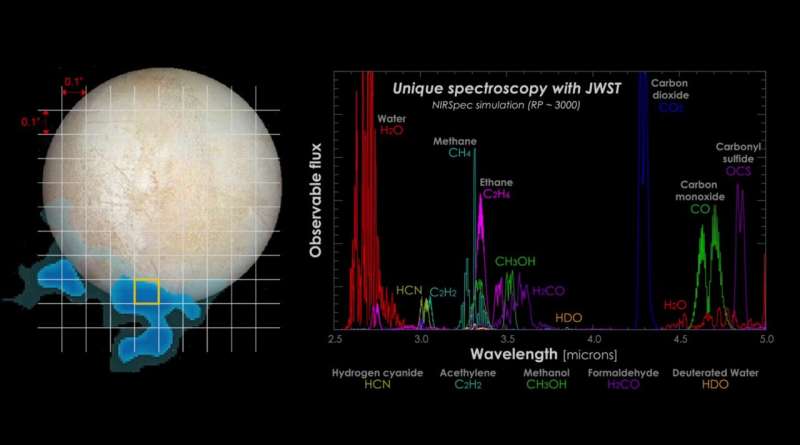
Copernical Team
Yahsat awarded $23M contract to supply advanced satellite communications for UAE satellites
 Al Yah Satellite Communications Company PJSC, the UAE's flagship satellite solutions provider, has announced that its dedicated government arm, Yahsat Government Solutions (YGS), has been successfully awarded a contract by the UAE Government, to provide satcom capabilities for its platforms.
To supplement and support the UAE Government contract, YGS has also been awarded a contract by the
Al Yah Satellite Communications Company PJSC, the UAE's flagship satellite solutions provider, has announced that its dedicated government arm, Yahsat Government Solutions (YGS), has been successfully awarded a contract by the UAE Government, to provide satcom capabilities for its platforms.
To supplement and support the UAE Government contract, YGS has also been awarded a contract by the Defence Innovation Agency signs with Exotrail for software solution for French Space Command
 Exotrail signed a contract with the Defence Innovation Agency (AID), an organisation which is part of the French Ministry of Defence. The contract is to provide the French Space Command (CDE) with a customised and enhanced version of ExoOPS - Mission Design, Exotrail's Software-as-a-Service (SaaS) product dedicated to simulation and mission analysis.
The customised product will be known as
Exotrail signed a contract with the Defence Innovation Agency (AID), an organisation which is part of the French Ministry of Defence. The contract is to provide the French Space Command (CDE) with a customised and enhanced version of ExoOPS - Mission Design, Exotrail's Software-as-a-Service (SaaS) product dedicated to simulation and mission analysis.
The customised product will be known as Recommendation algorithms that power Amazon, Netflix can improve satellite imagery, too
 Algorithms that help consumers decide what to stream or buy online can do more than predict customers' habits: They can help satellites see the Earth better, according to a Rutgers study.
Optical satellites lose sight of the Earth's surface when it is covered by clouds, and researchers have long relied on inaccurate tools to fill the blind spots, particularly along coastlines. By adapting
Algorithms that help consumers decide what to stream or buy online can do more than predict customers' habits: They can help satellites see the Earth better, according to a Rutgers study.
Optical satellites lose sight of the Earth's surface when it is covered by clouds, and researchers have long relied on inaccurate tools to fill the blind spots, particularly along coastlines. By adapting Spire Global to launch five satellites on SpaceX Transporter-5 Mission
 Spire Global, Inc. (NYSE: SPIR) ("Spire" or "the Company"), a leading global provider of space-based data, analytics and space services, has announced that it will launch five satellites on the upcoming SpaceX Transporter-5 Mission from Cape Canaveral Space Force Station in Florida. The launch will take place this month.
Spire Space Services, the company's Space-as-a-Service (SPaaS) busine
Spire Global, Inc. (NYSE: SPIR) ("Spire" or "the Company"), a leading global provider of space-based data, analytics and space services, has announced that it will launch five satellites on the upcoming SpaceX Transporter-5 Mission from Cape Canaveral Space Force Station in Florida. The launch will take place this month.
Spire Space Services, the company's Space-as-a-Service (SPaaS) busine Terran Orbital announces DARMA award
 Terran Orbital Corporation (NYSE: LLAP), a global leader in small satellite solutions, primarily serving the United States aerospace and defense industry, has announced that its subsidiary, PredaSAR Corporation, received a contract award from the Defense Advanced Research Projects Agency (DARPA) under an Other Transaction Authority for Prototype Agreement. Specific terms of the Agreement were no
Terran Orbital Corporation (NYSE: LLAP), a global leader in small satellite solutions, primarily serving the United States aerospace and defense industry, has announced that its subsidiary, PredaSAR Corporation, received a contract award from the Defense Advanced Research Projects Agency (DARPA) under an Other Transaction Authority for Prototype Agreement. Specific terms of the Agreement were no New cargo spacecraft being built
 China has begun to assemble a new cargo spacecraft that will be tasked with servicing the Tiangong space station, according to a key figure in the space station program.
Bai Mingsheng, a researcher at the China Academy of Space Technology and chief designer of the Tianzhou-series cargo spacecraft, told China Central Television on Sunday that the design work on the Tianzhou 6 has finished a
China has begun to assemble a new cargo spacecraft that will be tasked with servicing the Tiangong space station, according to a key figure in the space station program.
Bai Mingsheng, a researcher at the China Academy of Space Technology and chief designer of the Tianzhou-series cargo spacecraft, told China Central Television on Sunday that the design work on the Tianzhou 6 has finished a Boeing's Starliner encounters propulsion problems on way to ISS
 American aerospace giant Boeing's Starliner capsule was heading for the International Space Station Thursday, in a critical uncrewed test flight that followed years of failures and false starts.
The spacecraft encountered some propulsion troubles early in its journey, with two thrusters responsible for orbital maneuvering failing for unclear reasons - but NASA officials said the mission rem
American aerospace giant Boeing's Starliner capsule was heading for the International Space Station Thursday, in a critical uncrewed test flight that followed years of failures and false starts.
The spacecraft encountered some propulsion troubles early in its journey, with two thrusters responsible for orbital maneuvering failing for unclear reasons - but NASA officials said the mission rem Webb telescope nearly set to explore the solar system

As NASA's James Webb Space Telescope moves through the final phases of commissioning its science instruments, we have also begun working on technical operations of the observatory. While the telescope moves through space, it will constantly find distant stars and galaxies and point at them with extreme precision to acquire images and spectra. However, we also plan to observe planets and their satellites, asteroids, and comets in our solar system, which move across the background stars of our galaxy.
Boeing's troubled Starliner launches for ISS in key test
 American aerospace giant Boeing launched its Starliner capsule for the International Space Station Thursday in a critical uncrewed test flight that followed years of failures and false starts.
The Orbital Test Flight 2 (OFT-2) mission blasted off at 6:54 pm Eastern Time (2254 GMT) from the Kennedy Space Center in Florida, with the spaceship fixed atop a United Launch Alliance Atlas V rocket.
American aerospace giant Boeing launched its Starliner capsule for the International Space Station Thursday in a critical uncrewed test flight that followed years of failures and false starts.
The Orbital Test Flight 2 (OFT-2) mission blasted off at 6:54 pm Eastern Time (2254 GMT) from the Kennedy Space Center in Florida, with the spaceship fixed atop a United Launch Alliance Atlas V rocket. The role of space in driving sustainability, security and development on Earth

A new report reveals five actions that leaders can take to contribute to economic development, advance global security and sustainability, and make space a safe and globally accessible domain.
This report, a collaborative effort with the World Economic Forum, and informed by the views of approximately 100 industry leaders—describes potential scenarios for the future of space. It identifies five actions that could put the industry on the path to more positive outcomes, in which the full benefits of the space economy are realized.
Tanja Masson-Zwaan, Asst. Professor and Deputy Director of the International Institute of Air and Space Law, was involved in the realization of the report.
"The world is in a space renaissance," the report reads. "Expanding activity in space is beginning to outpace governance, technological progress is increasing accessibility, commercial funding is at an all-time high, and more nations and companies are clamoring to be part of the activity. Already space plays a role in advancing global sustainability and security priorities, but the potential is even greater. The future is in the balance, and all stakeholders have the capability to contribute to a more successful sector.
